Coffee and espresso are two of the most popular beverages in the world. While both are made from coffee beans, the brewing methods and resulting flavors are quite different.
Coffee is brewed by steeping ground coffee beans in hot water, while espresso is made by forcing hot water through tightly packed, finely ground coffee beans using high pressure.
One of the main differences between coffee and espresso is the concentration of caffeine. While a typical cup of coffee contains around 95 milligrams of caffeine, a single shot of espresso contains only around 63 milligrams.
However, because espresso is typically consumed in smaller quantities, the overall caffeine content can be higher than that of a cup of coffee.
Another difference between coffee and espresso is the flavor and texture. Coffee is generally milder and less intense than espresso, with a smoother, more balanced flavor. Espresso, on the other hand, is much stronger and more concentrated, with a thicker, creamier texture.
The brewing process also affects the flavor of the two beverages, with coffee often having a more complex and nuanced taste due to the longer steeping process.
what is coffee vs espresso?
If we look at the Italian word “espresso” right it comes from the root meaning express, fasts it also means the use of pressure so espresso is just another method of coffee preparation.
So rather than using your coffee pot or maybe a pour-over, You use an espresso machine, An espresso machine uses pressure to extract all of the flavors of coffee very quickly in 25 to 30 seconds.
When you’re doing just a regular pot of coffee or a pour-over, You’re going to allow gravity to pull the water through the grounds. Coffee vs espresso pour it over the top and so that’s going to take about. Three and a half four minutes depending on.
Coffee
Coffee and espresso are two of the most popular caffeinated beverages in the world. While both are made from coffee beans, they have distinct differences in preparation, flavor, and caffeine content.
Coffee is typically brewed by steeping ground coffee beans in hot water for several minutes, resulting in a more diluted and milder flavor.
Espresso
Espresso, on the other hand, is made by forcing hot water through finely-ground coffee beans at high pressure, resulting in a concentrated and bold flavor.
Another key difference between coffee and espresso is the caffeine content. A typical 8-ounce cup of coffee contains around 95 milligrams of caffeine, while a 1-ounce shot of espresso contains around 63 milligrams of caffeine.
However, because espresso is more concentrated, it is often used as a base for other caffeinated drinks, such as lattes and cappuccinos, which can contain more caffeine than a regular cup of coffee.
|
coffee vs espresso |
Coffee | Espresso | |
|
Variety of methods |
drip brewing, French press, and cold brew | espresso machine | |
|
Grinding size |
Coarse, Medium coarse | Fine | |
|
Flavor |
More diluted and milder | Concentrated and bold flavor | |
|
Caffeine |
8-ounce coffee cup 95 milligrams | 1-ounce shot 63 milligrams |
Preparation
In terms of preparation, making coffee is typically a slower and more straightforward process, while making espresso requires specialized equipment and a certain level of skill.
Coffee can be made using a variety of methods, including drip brewing, French press, and cold brew, while espresso is usually made using an espresso machine.
Overall, coffee and espresso have different flavor profiles and caffeine contents and are prepared using different methods. Which one you prefer is largely a matter of personal taste.
[quads id=19]
why are they different so in espresso?
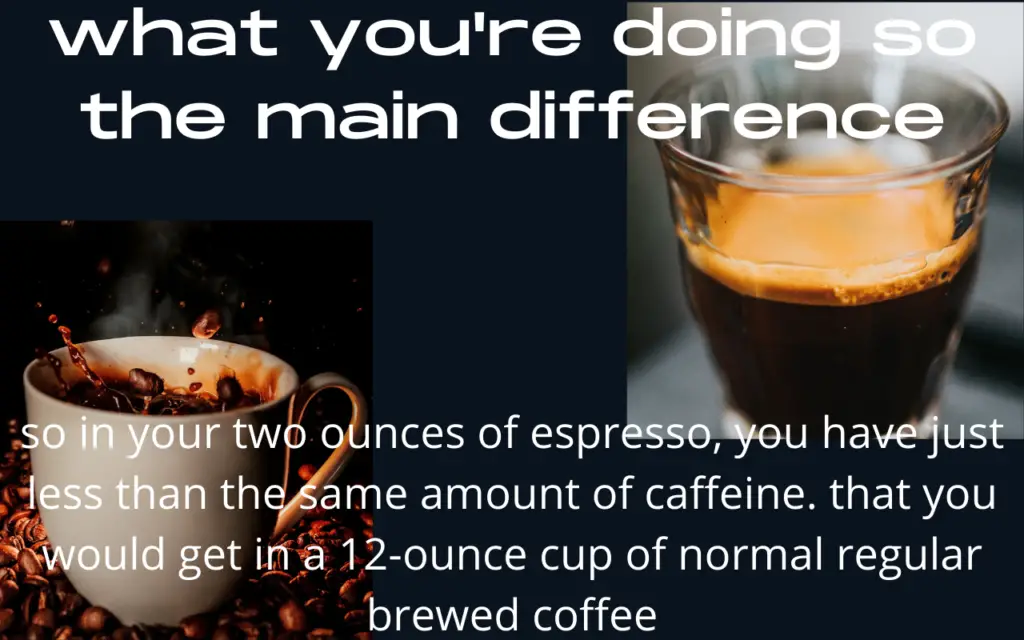
what you’re doing so the main difference:
Then is by using the force and pressure of an espresso machine, going through the coffee you’re able to extract a lot more flavor. a lot faster and in a smaller volume, so in your two ounces of espresso, you have just less than the same amount of caffeine. that you would get in a 12-ounce cup of normal regular brewed coffee.
coffee vs espresso so people always get confused about how much espresso equals how much-brewed coffee.
They kind of equal out if you were to have a 12-ounce latte and a 12-ounce mug of coffee even though this latte only has two ounces of espresso. it has close to the same amount of caffeine content as a 12-ounce cup of coffee.
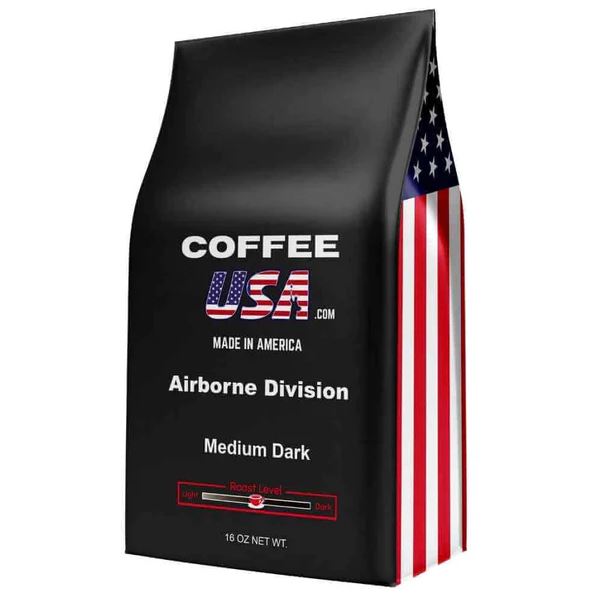
What makes them different? Espresso and drip coffee
The main difference between espresso and drip coffee is the preparation method used. In general, espresso is prepared using a much finer grind than what would be used to prepare drip coffee.
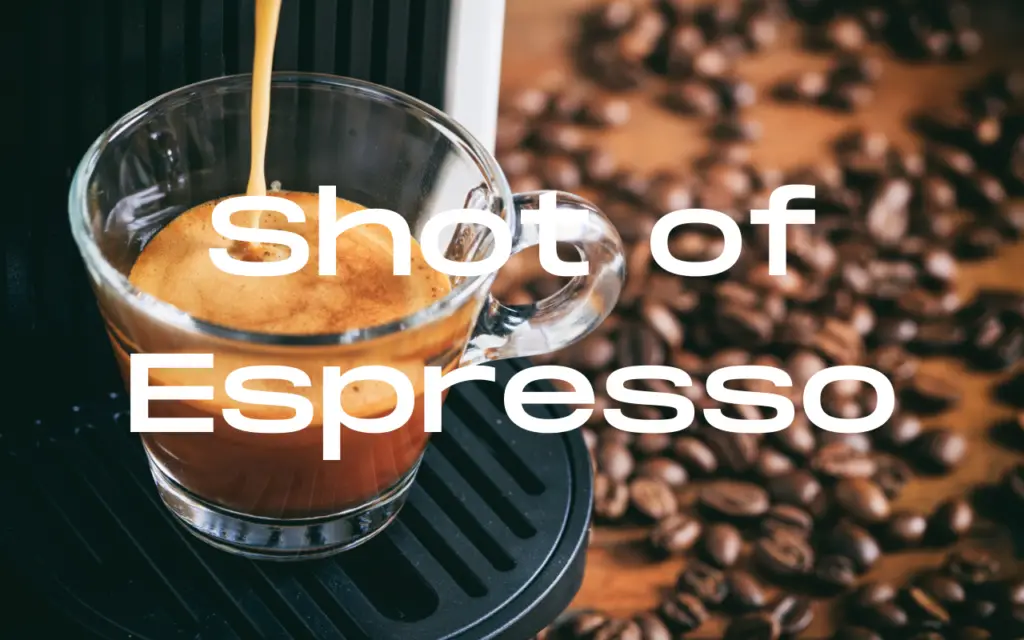
shot of espresso: coffee vs espresso
A shot of espresso is a concentrated coffee beverage that is made by forcing hot water through finely-ground coffee beans using a machine called an espresso machine.
It is typically served in a small cup and has a strong, rich flavor and aroma. Espresso is often used as a base for other coffee beverages, such as lattes, cappuccinos, and Americanos.
One of the main differences between coffee and espresso is the brewing method. While coffee is typically brewed by steeping coffee grounds in hot water, espresso is made by forcing hot water through tightly packed, finely ground coffee beans under high pressure.
This results in a concentrated, strong coffee flavor that is much more intense than regular coffee.
Espresso also has a higher caffeine content than regular coffee. A single shot of espresso typically contains around 63 milligrams of caffeine, while an 8-ounce cup of coffee contains anywhere from 85 to 185 milligrams of caffeine. This makes espresso a popular choice for those who need a quick energy boost.
Despite its strong flavor and high caffeine content, espresso is actually lower in acidity than regular coffee. This is because the high pressure used to brew espresso extracts less acid from the coffee beans, resulting in a smoother, less bitter taste.
Espresso requires an espresso machine that supports the espresso preparation process. The grinds are tamped so they are very compact. Nearly boiling water runs through the grinds for around 15-20 seconds to pull an espresso shot.
Espresso is generally thicker than coffee brewed by other methods, has a higher concentration of suspended and dissolved solids, and has crema on top, the lovely creamy foam on top of every good espresso.
Drip coffee, on the other hand, is a bit easier and more common to understand. Drip brewing, filtered coffee, or pour-over is a method that involves pouring water over roasted, medium-ground coffee beans contained in a filter to get coffee.
Whether using a simple pour-over set, a French press, or an electrical coffeemaker, the essence of the drip coffee process remains the same.
Regards to caffeine, Espresso has more caffeine per unit volume than drip coffee, but because the usual serving size is much smaller, the total caffeine content is less than a mug of standard brewed coffee, contrary to a common belief.
Both drip coffee and espresso can be consumed on their own, but they are also the base for various other coffee beverages. Specifically, espresso is used for many modern favorites like caffe latte, cappuccino, or caffe Americano. Did this content help you understand the difference between Espresso and drip coffee?
Overall, a shot of espresso is a concentrated coffee beverage that is made using a unique brewing method that results in a strong, rich flavor and aroma. It is a popular choice for those who need a quick energy boost or who enjoy the intense flavor of coffee.
How much caffeine in a shot of espresso
Espresso is known for its strong and bold flavor, but how much caffeine does a shot of espresso actually contain? According to the Department of Agriculture nutrition data, a single shot of espresso typically has 63 milligrams of caffeine in 1 ounce. However, the caffeine content can vary depending on factors such as the type of coffee bean used, the brewing method, and the size of the shot.
Compared to regular coffee, which has 12 to 16 milligrams of caffeine per ounce, espresso has a higher concentration of caffeine. This means that ounce for ounce, espresso has more caffeine than coffee. A single shot of espresso has about 75 milligrams of caffeine on average, while a single cup of coffee has about 110 milligrams of caffeine on average.
It’s also worth mentioning that the type of espresso shot can affect the caffeine content. A ristretto shot, which is a shorter and more concentrated shot of espresso, has less caffeine than a regular shot of espresso. On the other hand, a lungo shot, which is a longer shot of espresso, has more caffeine than a regular shot of espresso.
Overall, espresso contains more caffeine than regular coffee, but the actual amount can vary depending on several factors. It’s important to be aware of how much caffeine you’re consuming, especially if you’re sensitive to caffeine or have any health concerns.
How much caffeine in a shot of coffee
The amount of caffeine in a shot of espresso varies by the bean varietal and how it is prepared. On average, however, a shot of espresso has less caffeine than drip coffee, Believe it or not: 40 mg as compared to about 90 mg in 8 oz of drip coffee. It is well to keep in mind that some coffee beans are much higher in caffeine than others.
The world’s primary source of caffeine is the coffee “bean” (the seed of the coffee plant), from which coffee is brewed. The caffeine content in coffee varies widely depending on the type of coffee bean and the method of preparation used; even beans within a given bush can show variations in concentration.
Notice
- In general, one serving of coffee ranges from 80 to 100 milligrams,
- For a single shot (30 milliliters) of arabica-variety espresso,
- To approximately 100–125 milligrams for a cup (120 milliliters) of drip coffee.
- Arabica coffee typically contains half the caffeine of the robusta variety.
It’s also worth mentioning that the type of espresso shot can affect the caffeine content. A ristretto shot, which is a shorter and more concentrated shot of espresso, has less caffeine than a regular shot of espresso. On the other hand, a lungo shot, which is a longer shot of espresso, has more caffeine than a regular shot of espresso.
In general, dark-roast coffee has slightly less caffeine than lighter roasts because the roasting process reduces the caffeine content of the bean by a small amount.
what is an espresso
Espresso is a coffee-brewing method of Italian origin, in which a small amount of nearly boiling water (about 90 °C or 190 °F) is forced under 9–10 bars (900–1,000 kPa; 130–150 psi) of pressure (expressed) through finely-ground coffee beans.
Espresso coffee can be made with a wide variety of coffee beans and roast degrees. Espresso is the most common way of making coffee in southern Europe, especially in Italy, Spain, Portugal, Switzerland, Southern France, and Bulgaria.
Coffee brewing for other methods
Espresso is generally thicker than coffee brewed by other methods, with a viscosity of warm honey. This is due to the higher concentration of suspended and dissolved solids and has crema on top (a foam with a creamy consistency). As a result of the pressurized brewing process, the flavors and chemicals in a typical cup of espresso are very concentrated.
The three dispersed phases in espresso are what make this beverage unique. The first dispersed phase is an emulsion of oil droplets. The second phase is suspended solids, while the third is the layer of gas bubbles or foam. The dispersion of very small oil droplets is perceived in the mouth as creamy.
This characteristic of espresso contributes to what is known as the body of the beverage. These oil droplets preserve some of the aromatic compounds that are lost to the air in other coffee forms. This preserves the strong coffee flavor present in the espresso.
Espresso is also the base for various coffee drinks—including caffè latte, cappuccino, caffè macchiato, caffè mocha, flat white, and caffè Americano.
Espresso has more caffeine per unit volume than most coffee beverages, but because the usual serving size is much smaller, the total caffeine content is less than a mug of standard brewed coffee.
The actual caffeine content of any coffee drink varies by size, bean origin, roast method, and other factors, but a typical 28 grams (1 ounce) serving of espresso usually contains 65 milligrams of caffeine, whereas a typical serving of drip coffee usually contains 150 to 200 mg.

Is Espresso stronger than coffee?
Depends on what’s meant by “stronger”. Do you mean flavor density? Or caffeine content?
Notice
A single espresso has less caffeine than a cup of coffee. Far less than a large mug of coffee. It’d take about three shots of espresso, or more, to achieve the caffeine content of one mug of full-strength drip coffee.
Notice
For flavor density, on the other hand, espresso is stronger. It’s a concentrated dose of coffee. Thick, dark, creamy, and syrupy.
Like the difference between a pint of beer, or a shot of whiskey. The liquor is “stronger”, but the alcohol content is roughly the same as a tall glass of beer.
Is Espresso stronger than coffee?
Yes. According to the Specialty Coffee Association, A standard cup of brewed coffee contains 55 grams of coffee to 1 liter of water.
Notice
- If we break that down to an 8-ounce cup, we get a ratio of 13.2 grams of coffee to 8 ounces of water This gives a water/coffee ratio of about 18:1.
- For espresso, SCA research last year shows most baristas pulling shots of about 20 grams of coffee to 36 ml (about 1 ounce) of water.
- This gives us a ratio of less than 2:1 (water to coffee) So it is MUCH stronger. Roughly the same amount of coffee with 1/8th of the water.
One of the most common misconceptions about espresso is that it is stronger than coffee. While it is true that espresso has a higher concentration of caffeine per ounce, it is not necessarily stronger than coffee in terms of overall caffeine content.
According to Consumer Reports, a 2-ounce shot of espresso contains about 80 milligrams of caffeine, while an 8-ounce cup of coffee contains anywhere from 95 to 200 milligrams of caffeine.
This means that while a single shot of espresso may have more caffeine per ounce than a cup of coffee, a cup of coffee will typically have more caffeine overall.
It’s also worth noting that the strength of coffee and espresso is not just determined by caffeine content. The brewing process also plays a significant role.
Espresso
Espresso is made by forcing hot water through finely-ground coffee beans at high pressure, which extracts a strong, concentrated flavor.
Coffee
Coffee, on the other hand, is typically brewed using a drip method, which allows water to slowly drip through coarser coffee grounds, resulting in a milder flavor.
Another factor to consider is the size of the serving. Espresso is typically served in small, 2-ounce shots, while coffee is usually served in larger cups.
This means that while a single shot of espresso may have more caffeine per ounce than a cup of coffee, a person may consume more caffeine overall by drinking multiple cups of coffee throughout the day.
In summary, while espresso does have a higher concentration of caffeine per ounce than coffee, it is not necessarily stronger than coffee in terms of overall caffeine content. The strength of coffee and espresso is also influenced by the brewing process and serving size.
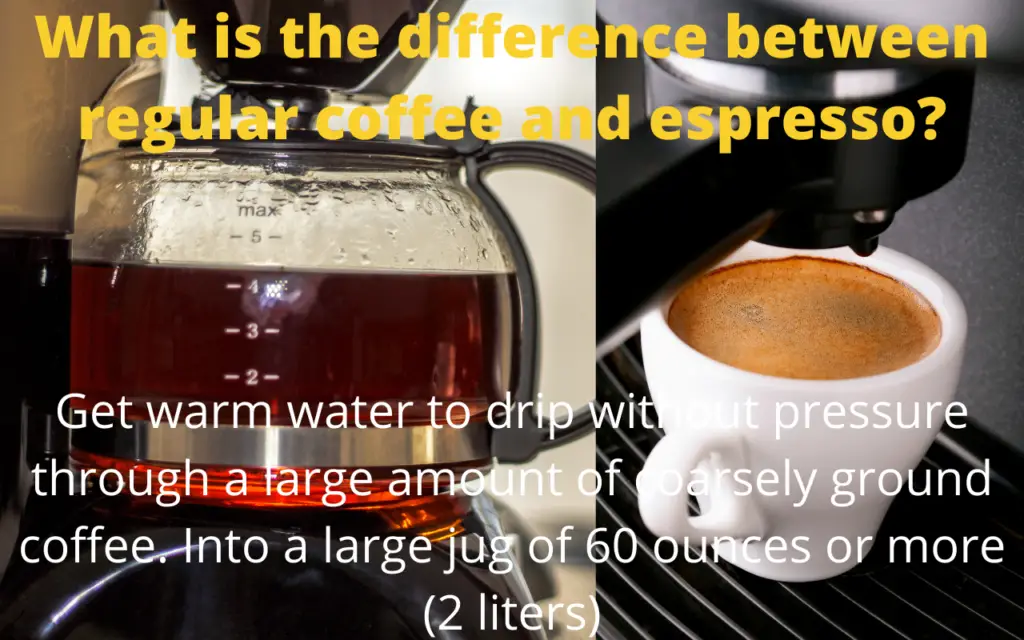
What is the difference between regular coffee and espresso?
At first glance, the difference between regular coffee and espresso might seem simple: one is a shot, and one is a cup. However, the real difference lies in how the beans are roasted and brewed.
Espresso is made by forcing pressurized water through finely ground coffee beans, resulting in a concentrated and strong flavor. Regular coffee, on the other hand, is brewed by pouring hot water over coarsely ground coffee beans, resulting in a milder and less concentrated flavor.
One of the main differences between coffee and espresso is the caffeine content. Espresso has a higher concentration of caffeine per ounce than regular coffee, but because it is typically consumed in smaller amounts, the total caffeine intake is often lower.
Additionally, the taste of espresso is often described as more intense, with a thicker and creamier texture than regular coffee.
Another difference between coffee and espresso is the way they are served. Coffee is typically served in a mug or a larger cup, while espresso is served in a small shot glass.
Espresso is often used as a base for other coffee drinks, such as lattes and cappuccinos, while regular coffee is usually consumed on its own.
In summary, the main differences between regular coffee and espresso are the way they are brewed, the caffeine content, the taste, and the way they are served. While both coffee and espresso have their own unique characteristics, the choice between the two ultimately comes down to personal preference.
These machines in North America get warm water to drip without pressure through a large amount of coarsely ground coffee into a large jug of 60 ounces or more (2 liters). This jug is enough for ten cups or so, depending on the size of the cup.

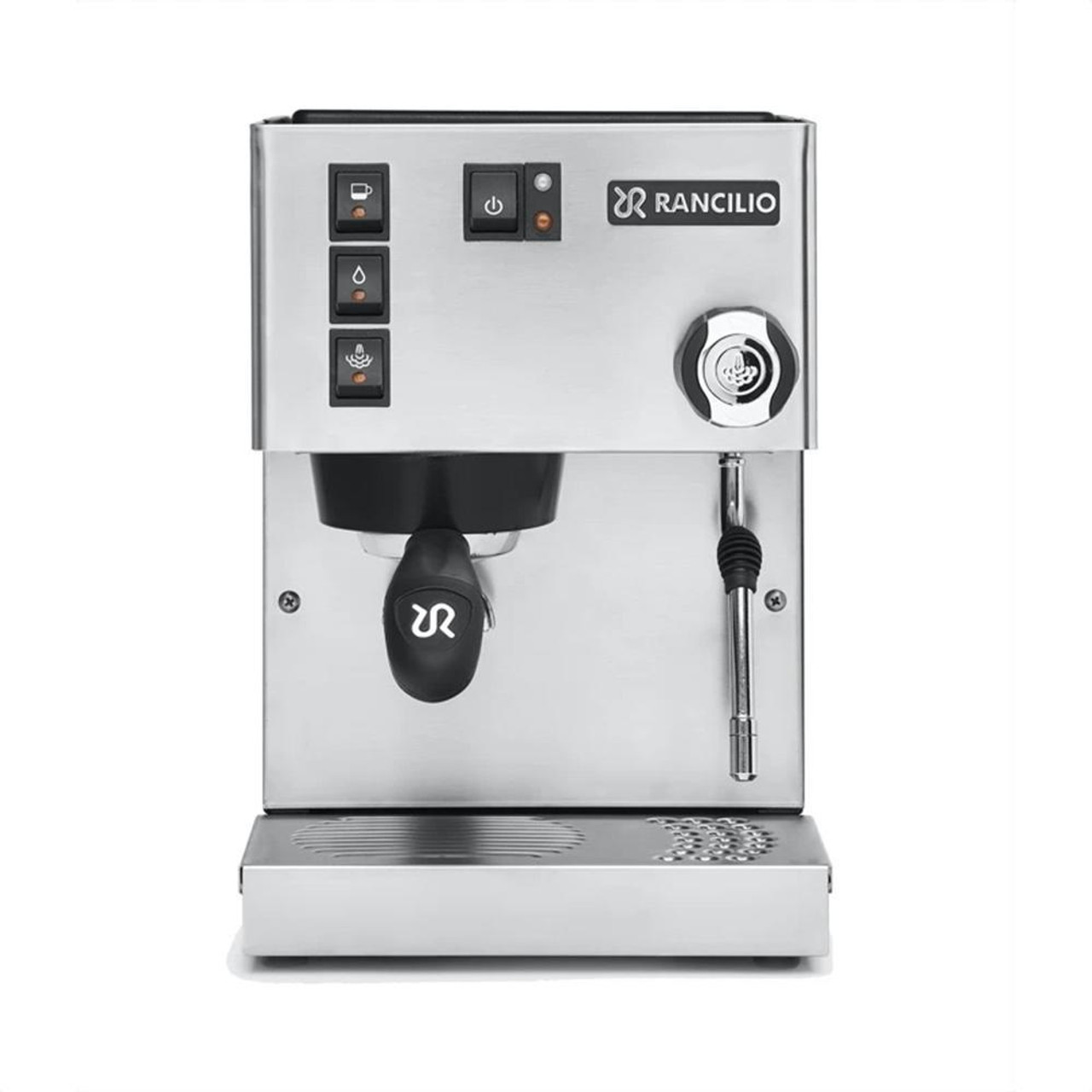

There are three main ways to make espresso:
- A steam espresso machine, which you usually find in good coffee shops or at homes of people who like to drink a lot of coffee and want to invest in high-end equipment.
- Moka pots, also known as machines, you will find in private homes of people who like espresso, but don’t drink too much of it, like me, and very occasionally in hipstery coffee shops.
- A capsule machine is becoming increasingly common in homes and offices, even though coffee connoisseurs don’t take it seriously.
- (If you ask me, capsule machines are not awful, and I’m fine with drinking such coffee at home or an office, but a place that sells coffee from a capsule machine really shouldn’t call itself a “coffee shop” or a “café”. Unfortunately, this sometimes happens.)
All these machines work by pushing steam and boiling water through finely-ground coffee (but not as finely as it is ground for Turkish coffee). The pressure that these machines use to push the boiling water through the ground coffee is the source of the name espresso.

It also means “express”, because a full-blown espresso machine produces a personal serving of coffee very quickly. (A Moka pot is slower because it takes some time to boil the water.)

In capsule machines, the ground coffee is already in the capsule. In Moka pots and espresso machines, the person who prepares the coffee puts the necessary amount of ground coffee for one or two shots into the machine.

The standard size of an espresso shot produced by an espresso machine is about one ounce, which is much smaller than an American cup of coffee.
When a coffee vs espresso experienced person prepares properly roasted and ground coffee in a good machine, the espresso cup comes out with a layer of foam at the top, called “crema” (this is a foam of coffee itself—not milk).
This is the usual measure of the quality of the prepared espresso—the crema is supposed to have a pleasing-looking color and to be thick and stable.
Cappuccino is espresso with milk foam. Latte is also espresso with milk in some form, but it has many variants and sizes and every place sells it differently, whereas cappuccino tends to be more uniform.
What is the difference between Espresso & drip coffee?
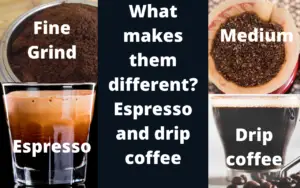
For most people who are lovers of caffeine, the line between drip-style coffee and espresso can be a bit fuzzy.
We’re an affiliate
We hope you love the products we recommend! Just so you know, we may collect a share of sales or other compensation from the links on this page. Thank you if you use our links, we really appreciate it!
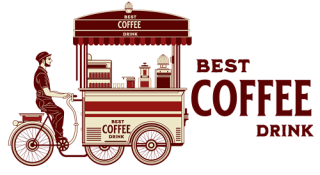

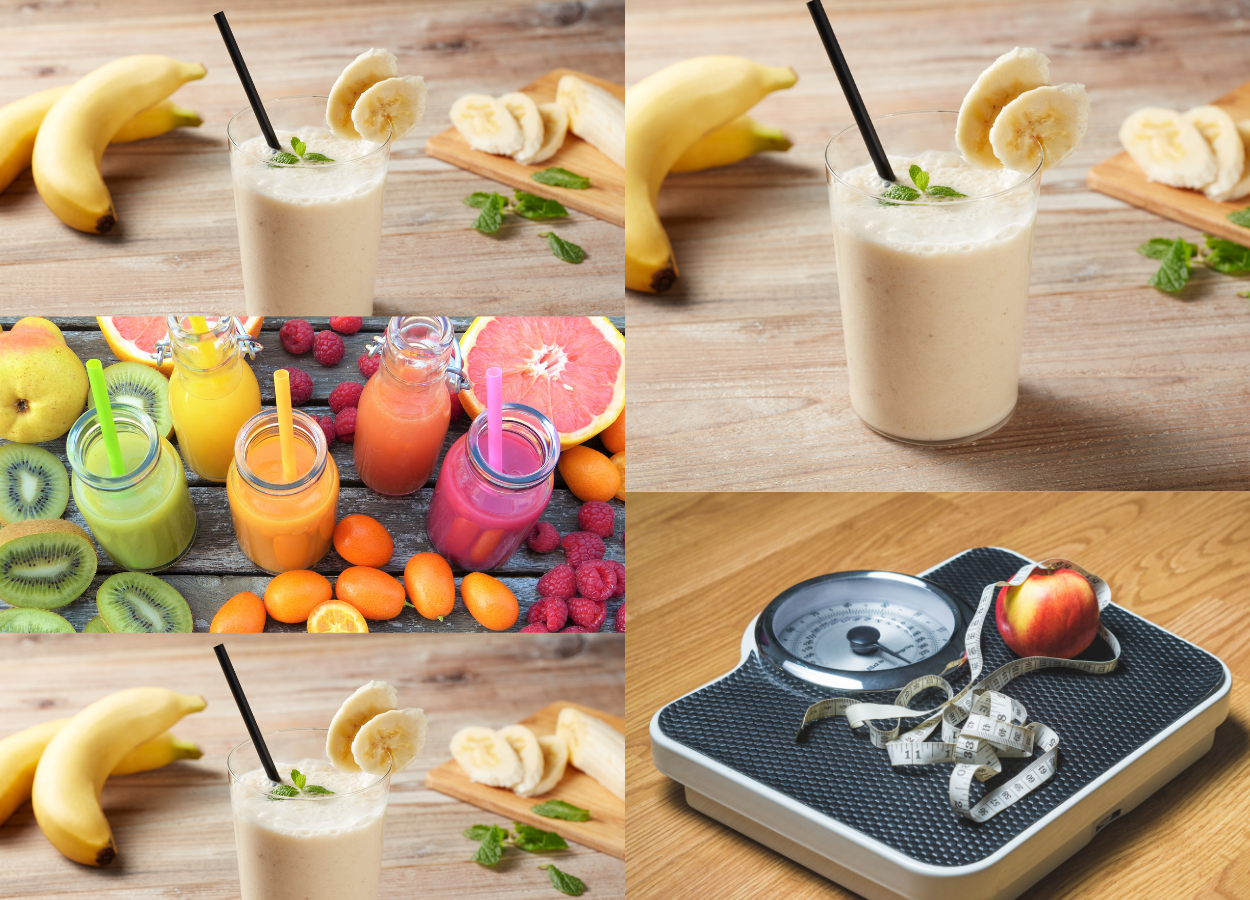
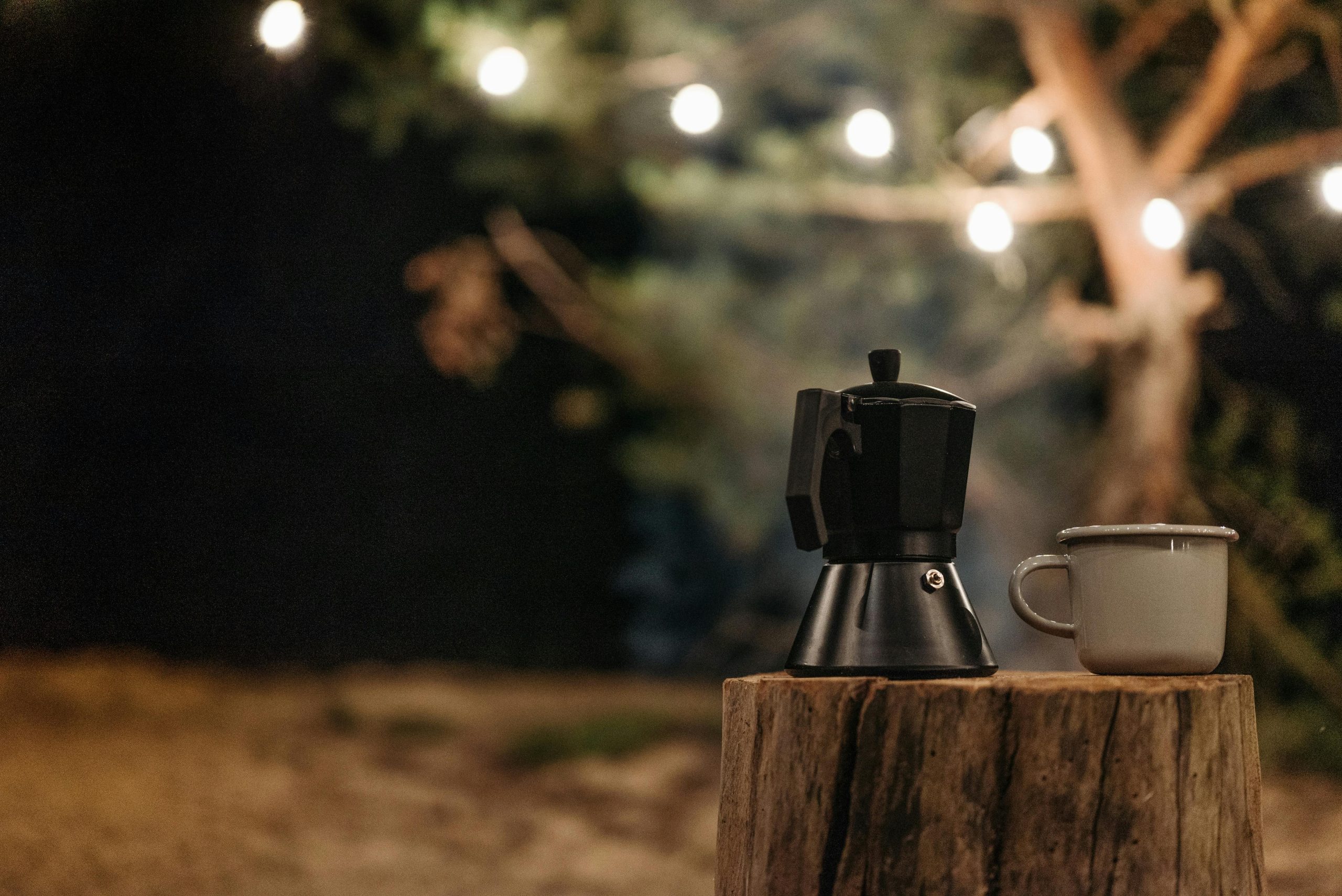
Leave a Reply